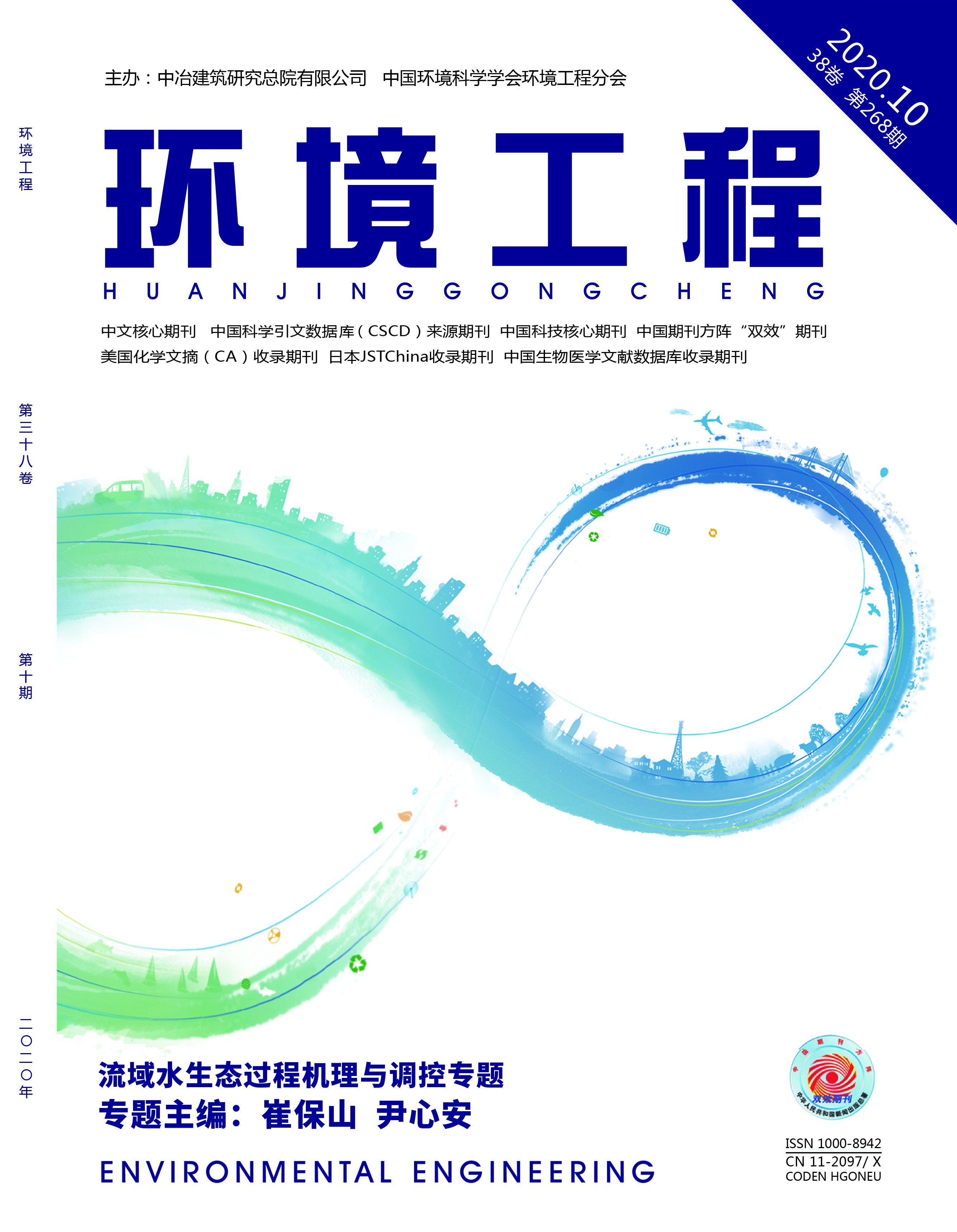|
中国环境保护部等. 全国土壤污染状况调查公报[EB/OL].[2014-04-17]. www.gov.cn/foot/site1/20140417/782bcb88840814ba158d01.pdf.
|
|
刘伟,张永波,贾亚敏.重金属污染农田植物修复级强化措施研究进展[J]. 环境工程, 2019, 37(5):29-33
,44.
|
|
MCGRATH S P, SIDOLI C M D, BAKER A J M, et al. The Potential for the Use of Metal-Accumulating Plants for the in Situ Decontamination of Metal-Polluted Soils[M].Integrated Soil and Sediment Research:A Basis for Proper Protection. Springer Netherlands, 1993.
|
|
CAMESELLE C, CHIRAKKARA R A, REDDY K R, et al. Electrokinetic-enhanced phytoremediation of soils:Status and opportunities[J]. Chemosphere, 2013, 93(4):626-636.
|
|
O' CONNOR C S, LEPP N W, EDWARDS R, et al. The combined use of electrokinetic remediation and phytoremediation to decontaminate metal-polluted soils:a laboratory-scale feasibility study[J]. Environmental Monitoring & Assessment, 2003, 84(1/2):141-158.
|
|
LIM J M, SALIDO A L, BUTCHER D J, et al. Phytoremediation of lead using Indian mustard (Brassica juncea) with EDTA and electrodics[J]. Microchemical Journal, 2004, 76(1/2):3-9.
|
|
ZHOU D M, CHEN H F, CANG L, et al. Ryegrass uptake of soil Cu/Zn induced by EDTA/EDDS together with a vertical direct-current electrical field[J]. Chemosphere, 2007, 67(8):1671-1676.
|
|
CANG L, WANG Q Y, ZHOU D M, et al. Effects of electrokinetic-assisted phytoremediation of a multiple-metal contaminated soil on soil metal bioavailability and uptake by Indian mustard[J]. Separation & Purification Technology, 2011, 79(2):246-253.
|
|
PUTRA R S, OHKAWA Y, TANAKA S, et al. Application of EAPR system on the removal of lead from sandy soil and uptake by Kentucky bluegrass (Poa pratensis, L.)[J]. Separation & Purification Technology, 2013, 102(1):34-42.
|
|
GOSWAMI C, MAJUMDER A. Arsenic uptake by lemna minor in hydroponic system[J]. International Journal of Phytoremediation, 2014, 16(12):1221-1227.
|
|
TAHMASBIAN I, SINEGANI A A S. Monitoring the effects of chelating agents and electrical fields on active forms of Pb and Zn in contaminated soil[J]. Environmental Monitoring & Assessment, 2013, 185(11):8847-8860.
|
|
ABOUGHALMA H, BI R, SCHLAAK M, et al. Electrokinetic enhancement on phytoremediation in Zn, Pb, Cu and Cd contaminated soil using potato plants[J]. Journal of Environmental Science & Health Part A Toxic/hazardous Substances & Environmental Engineering, 2008, 43(8):926-933.
|
|
BI R, SCHLAAK M, SIEFERT E, et al. Alternating current electrical field effects on lettuce (Lactuca sativa) growing in hydroponic culture with and without cadmium contamination[J]. Journal of Applied Electrochemistry, 2010, 40(6):1217-1223.
|
|
ROCHA I M V, SILVA K N O, SILVA D R, et al. Coupling electrokinetic remediation with phytoremediation for depolluting soil with petroleum and the use of electrochemical technologies for treating the effluent generated[J]. Separation and Purification Technology, 2019, 208:194-200.
|
|
REZAEE M, ASADOLLAHFARDI G. An Implicit finite difference model for electrokinetic remediation of cd-spiked kaolinite under acid-enhanced and unenhanced conditions[J]. Environmental Modeling & Assessment, 2019,24(2):235-248.
|
|
GU Y Y, YEUNG A T, LI H J, et al. Enhanced electrokinetic remediation of cadmium-contaminated natural clay using organophosphonates in comparison with EDTA[J]. Chinese Journal of Chemical Engineering, 2018,26(5):1152-1159.
|
|
LIU L W, LI W, SONG W P, et al. Remediation techniques for heavy metal-contaminated soils:principles and applicability[J]. Science of The Total Environment, 2018, 633:206-219.
|
|
SILVA K N O, PAIVA S S M, SOUZA F L, et al. Applicability of electrochemical technologies for removing and monitoring Pb2+ from soil and water[J]. Journal of Electroanalytical Chemistry, 2018, 816:171-178.
|
|
ANNAMALAI S, SANTHANAM M, SELVARAJ S, et al. "Green technology":Bio-stimulation by an electric field for textile reactive dye contaminated agricultural soil[J]. Science of The Total Environment, 2018, 624:1649-1657.
|
|
BI R, SCHLAAK M, SIEFERT E, et al. Influence of electrical fields (AC and DC) on phytoremediation of metal polluted soils with rapeseed (Brassica napus) and tobacco (Nicotiana tabacum)[J]. Chemosphere, 2011, 83(3):318-326.
|
|
SULTANA R, KOBAYASHI K, KIM K H, et al. Comparison of arsenic uptake ability of barnyard grass and rice species for arsenic phytoremediation[J]. Environmental Monitoring & Assessment, 2015, 187(1):1-9.
|
|
ACOSTA-SANTOYO G, CAMESELLE C, BUSTOS E, et al. Electrokinetic-Enhanced ryegrass cultures in soils polluted with organic and inorganic compounds[J]. Environmental Research, 2017, 158:118-125.
|
|
WENZEL W W, KIRCHBAUMER N, PROHASKA T, et al. Arsenic fractionation in soils using an improved sequential extraction procedure[J]. Analytica Chimica Acta, 2001, 436(2):309-323.
|
|
李瑞, 吴波, 王卅, 等. 高电场强度下污染土壤电动修复的关键参数分析[J]. 环境工程, 2018, 36(9):154-158.
|
|
PROBSTEIN R F. Physicochemical Hydrodynamics:An Introduction, 2nd ed[M]. Hoboken, NJ:John Wiley & Sons, 2003.
|
|
ACAR Y B, ALSHAWABKEH A N. Principles of electrokinetic remediation[J]. Environmental Science & Technology, 1992, 27(13):2638-2647.
|
|
MYROLD D D. The rhizosphere:biochemistry and organic substances at the soil-plant interface, second edition[J]. Soil Science Society of America Journal, 2008, 72(6):339-353.
|
|
CAMESELLE C. Electrochemical remediation technologies for polluted soils, sediments and groundwater[M]. Springer, 2009.
|
|
纪冬丽, 孟凡生, 薛浩, 等. 国内外土壤砷污染及其修复技术现状与展望[J]. 环境工程技术学报, 2016,6(1):90-99.
|
|
USEPA. Introduction to Phytoremediation. Report No. EPA/600/R 99/107[R], 2000.
|
|
FARIAS V D, MARANHO L T, VASCONCELOS E C D, et al. Phytodegradation potential of erythrina crista-galliL. Fabaceae, in petroleum-contaminated soil[J]. Applied Biochemistry & Biotechnology, 2009, 157(1):10-22.
|
|
苗林, 王海波. 皖北矿区土壤中重金属时空变化研究[C]//中国煤炭学会矿井地质专业委员会成立三十五周年暨中国煤炭学会矿井地质专业委员会2017年学术论坛, 2017.
|
|
VAMERALI T, BANDIERA M, MOSCA G, et al. Field crops for phytoremediation of metal-contaminated land:a review[J]. Environmental Chemistry Letters, 2010, 8(1):1-17.
|
|
马科峰, 王海芳, 卢静, 等. 电动力强化植物修复土壤重金属的研究进展[J]. 应用化工, 2019,48(3):709-712
,716.
|
|
仓龙, 周东美, 吴丹亚, 等. 水平交换电场与EDDS螯合诱导植物联合修复Cu/Zn污染土壤[J]. 土壤学报, 2009, 46(4):729-735.
|
|
赵鹏雷, 毕然. 土壤重金属污染的电动力学联合植物修复技术[J]. 黑龙江科技信息, 2012(10):43-44.
|
|
张军, 蔺亚青, 胡方洁, 等. 土壤重金属污染联合修复技术研究进展[J]. 应用化工, 2018, 47(5):1038-1042
,1047.
|
|
魏树和, 徐雷, 韩冉, 等. 重金属污染土壤的电动-植物联合修复技术研究进展[J]. 南京林业大学学报(自然科学版), 2019, 43(1):158-164.
|


 Login
Login Register
Register E-alert
E-alert






 DownLoad:
DownLoad: